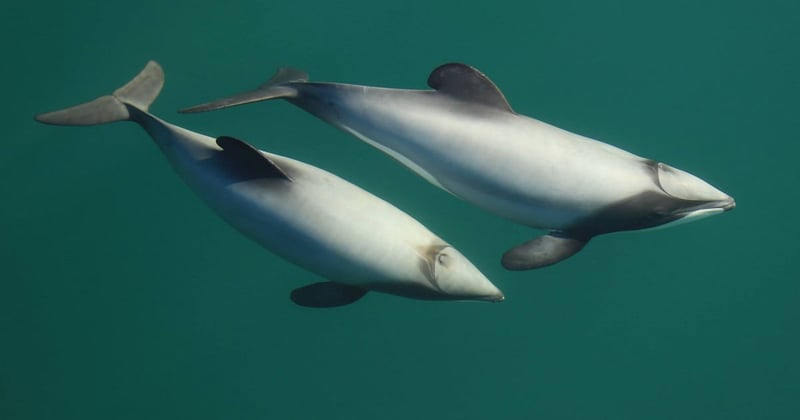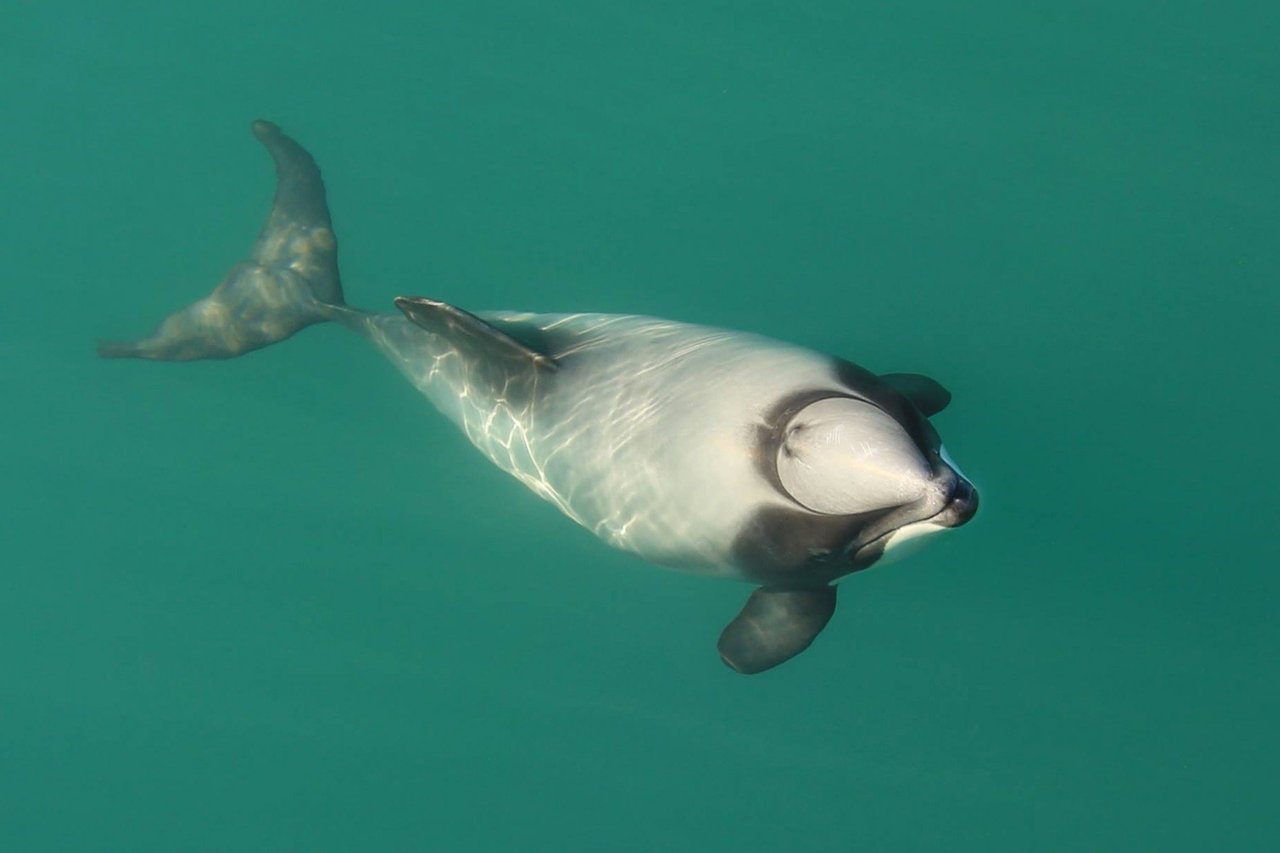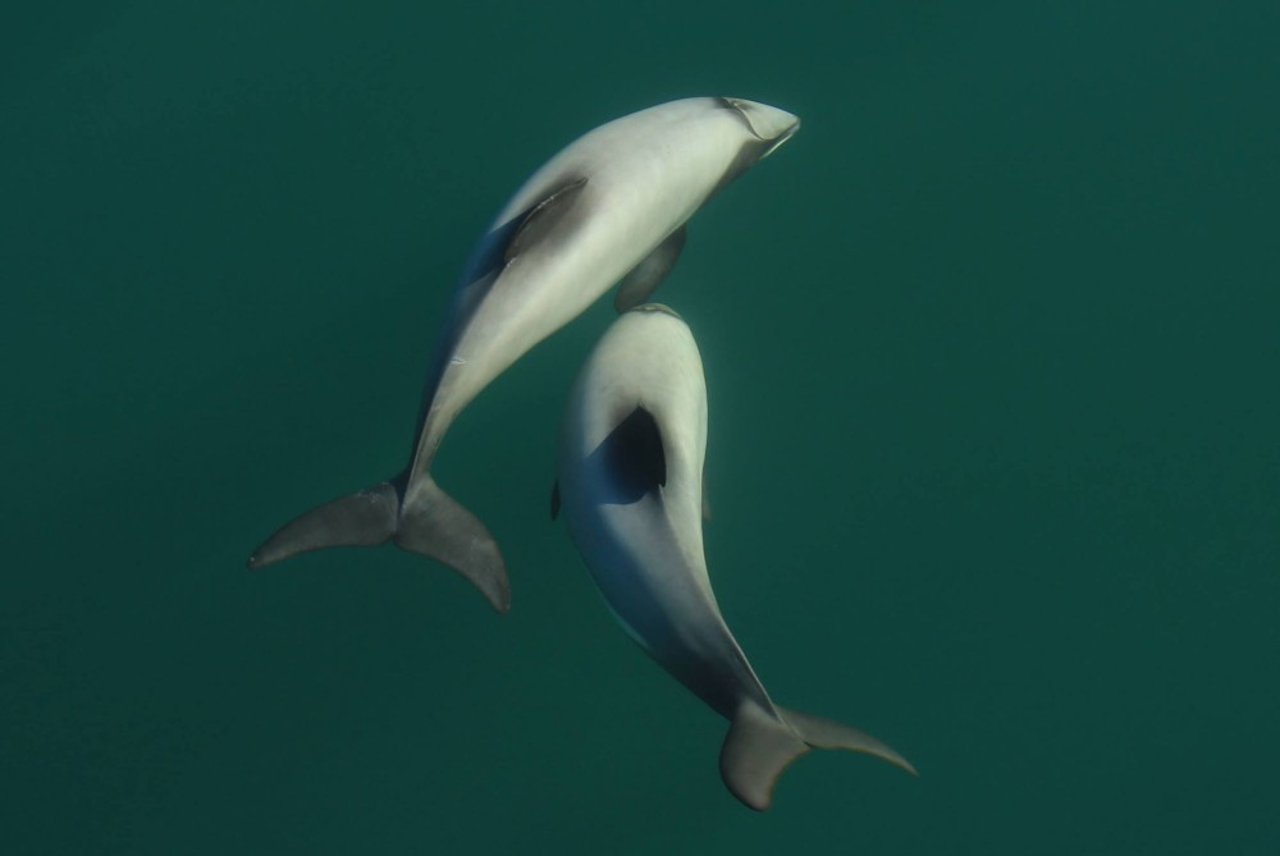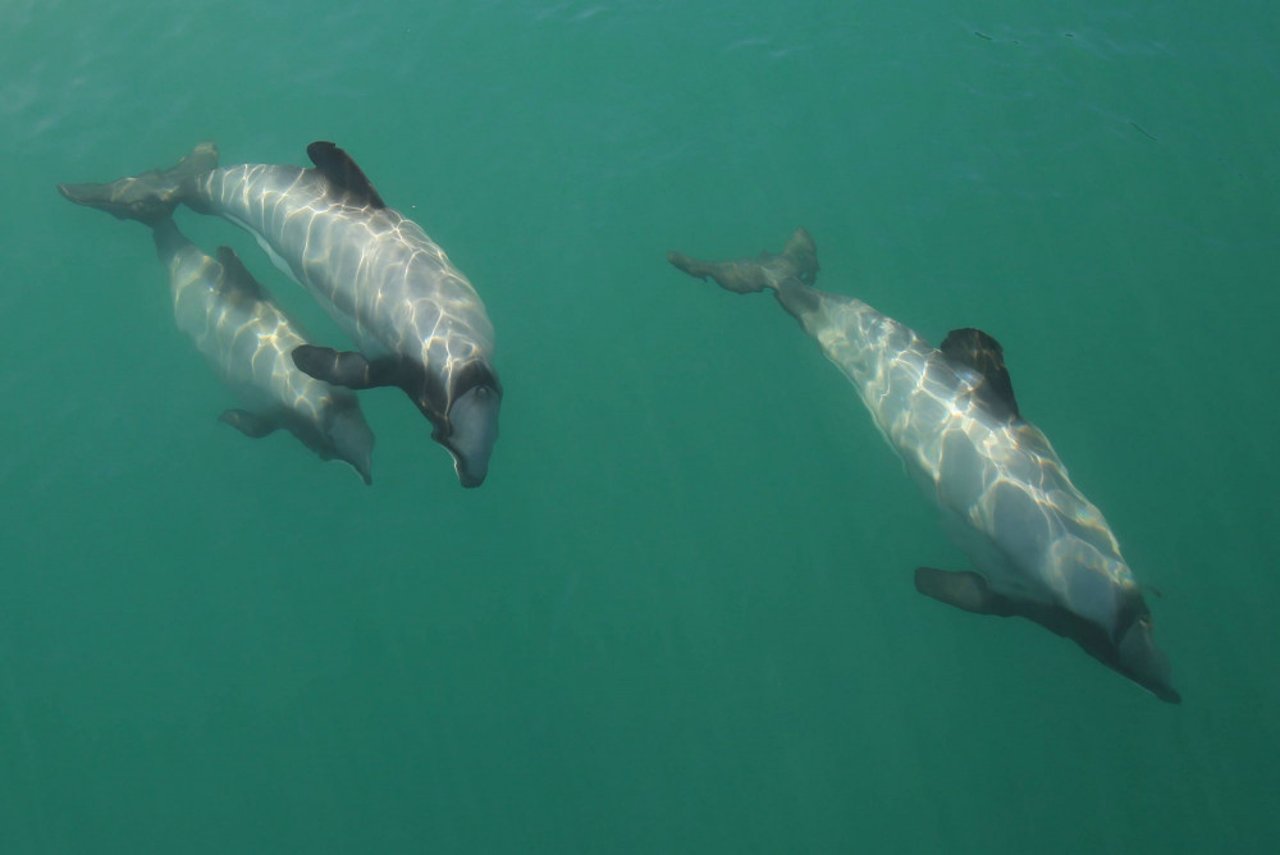
Maui and Hector’s dolphins continue to slide toward extinction
News
Maui and Hector’s dolphins are among the world’s smallest and rarest dolphins, and they’re only found in New Zealand’s coastal waters.
There are four subpopulations around the country – known as Maui, and Pahu, and other local names. They are well loved by local communities, and important for New Zealand’s dolphin watching tourism. Sadly, they’re also icons of all the wrong that’s being done to our oceans.
Image credit: Rob Pine
From 20,000 to 57 Maui dolphins left
Up until the 1970s there were an estimated 30,000 Hector’s dolphins all around our coast, and about 2000 Maui on the North Island’s West Coast. After the introduction of monofilament set nets in the fishing fleet, the numbers of these endearing dolphins has dropped to around 10,000 Hector’s, and only about 57 Maui. Some of the South Island Hector’s subpopulations, off the Otago coast, for example, are as low as only about 40 individuals.
In 2008, the Government recognised the problems facing Maui and Hector’s and established four Marine Mammal Sanctuaries around the country. But protection is patchy and some of the populations, such as in Golden Bay, still have no protection at all. Dolphins continue to be killed in legal and illegal set nets. Five dolphins, one entire family, were killed in a single net in Canterbury, outside current protected areas, earlier this year. No-one was prosecuted, and there was no change to their protection as a result.
Image credit: Rob Pine
New threats to these dolphins continue
Sadly, new threats to the dolphins continue to emerge. Marine use and resource extraction causes noise and habitat disturbance to the dolphins, creating physical harm and behaviour change that puts individual dolphins and the populations at more risk.
The Government recently approved an application for seabed exploration off the Taranaki coast. Permission was granted under the Crown Minerals Act for a company to explore the ocean floor in preparation for seabed mining. In the South Island’s Lyttleton harbour, the Port Company has started pile driving for its cruise-ship wharf, using methods that are noisy and harmful to the harbour’s Hector’s, when safer alternatives exist. Both these activities are in the dolphins’ Marine Mammal Sanctuaries which undermines the safety of the dolphins and the meaning of the term ‘sanctuary’.
Maui and Hector’s dolphins continue to slide toward extinction because they get caught in set and trawl nets and drown. The last thing they need is additional impact from noisy and disruptive extraction and use pressures such as sea bed mining and pile driving. These precious little dolphins need more protection, not more harm in their habitat.
World Animal Protection recognises the animal welfare issues and the risks facing Maui and Hector’s dolphins. We join all New Zealanders who want better protection for these dolphins and their marine habitat, throughout their range, from the complete raft of threats.
Image credit: Rob Pine
World Animal Protection recognises the animal welfare issues and the risks facing Maui and Hector’s dolphins. We join all New Zealanders who want better protection for these dolphins.


